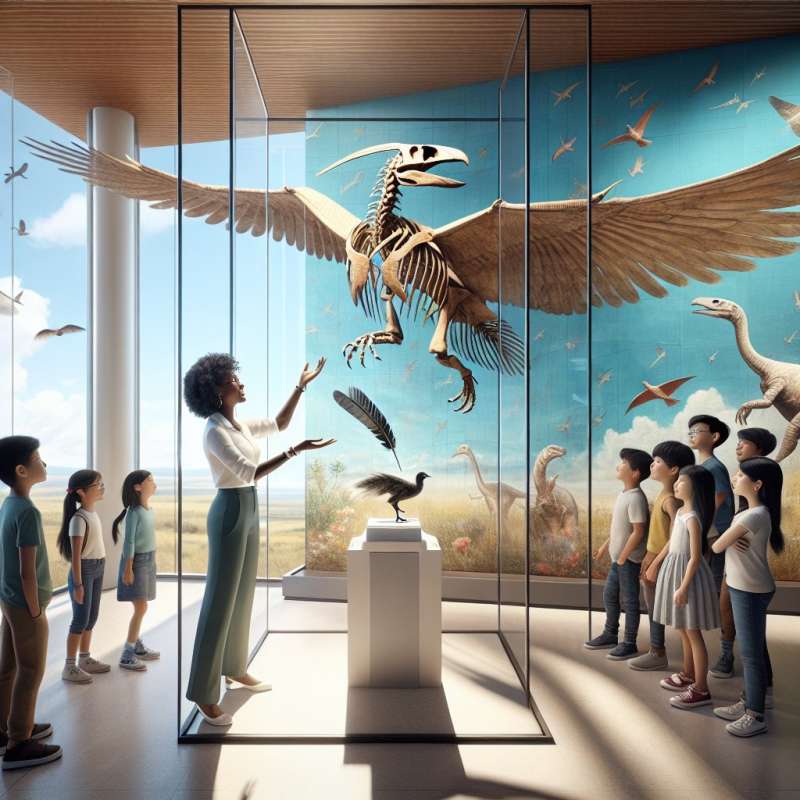
Introduction to Archaeopteryx
Archaeopteryx bridges the gap between dinosaurs and birds. Discovered in 1861, it represents a transitional form, showcasing both reptilian and avian features. Its fossils are a palaeontological treasure, mainly found in Germany.
Archaeopteryx's Feathered Mystique
Unlike most dinosaurs, Archaeopteryx bore feathers. These complex feathers are akin to modern birds, suggesting it could glide. However, whether it could achieve powered flight remains a subject of scientific debate.
Unique Skeletal Features
Archaeopteryx had jaws with sharp teeth, a long bony tail, and three fingers with claws, resembling theropod dinosaurs. Yet, its avian traits, like a wishbone and wings, highlight its evolutionary significance.
Varied Archaeopteryx Specimens
The eleven known specimens of Archaeopteryx show variety in size and features. This diversity indicates possible sexual dimorphism or different ages and stages of growth within the species.
Archaeopteryx's Lifestyle Insights
Isotope analysis of Archaeopteryx fossils suggests a terrestrial or possibly arboreal lifestyle, not aquatic as once thought. This reinforces the theory of tree-dwelling ancestors of birds.
Controversial Taxonomic Placement
Archaeopteryx's classification has been contentious. Initially regarded as the first bird, its position has been challenged, with some considering it more closely related to non-avian dinosaurs.
Archaeopteryx in Popular Culture
Beyond science, Archaeopteryx captures the public imagination, appearing in literature, documentaries, and even inspiring the name of a lunar crater, reflecting its emblematic status in evolution.
Where were Archaeopteryx fossils mainly found?
South America
Germany
China
Company